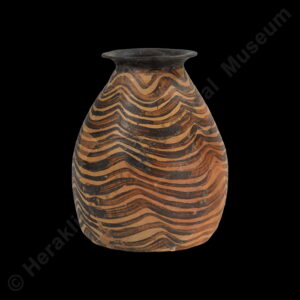
Clay alabastra are named after the similar Egyptian vases made of alabaster. In prehistoric times, alabastra were piriform (pear-shaped), ovoid (egg-shaped), squat and spherical or cylindrical, with a narrow mouth. In some cases the painted decoration imitates the wavy veins of the alabaster originals. Stone alabastra were usually imported from Egypt, while imitations were produced in Minoan Crete using local limestone. Alabastra were used as pots for unguents and perfumed oils, and are often found as grave goods, particularly in the Mycenaean period. In historical times, alabastra had a long, slender or piriform body and a narrow neck with a small mouth. They were made of various materials such as clay, glass and alabaster. Their shape made them suitable for storing small quantities of perfumes and oils.